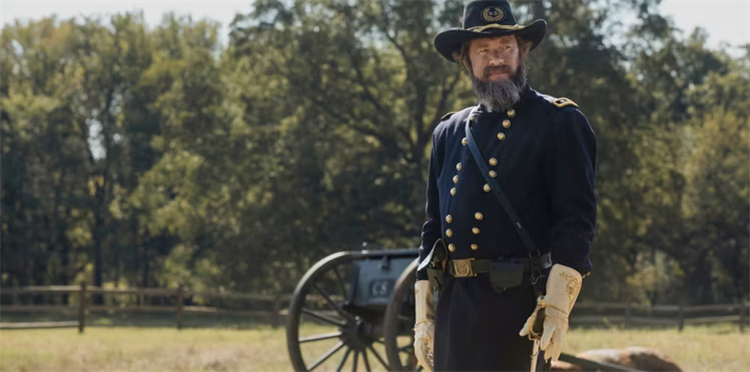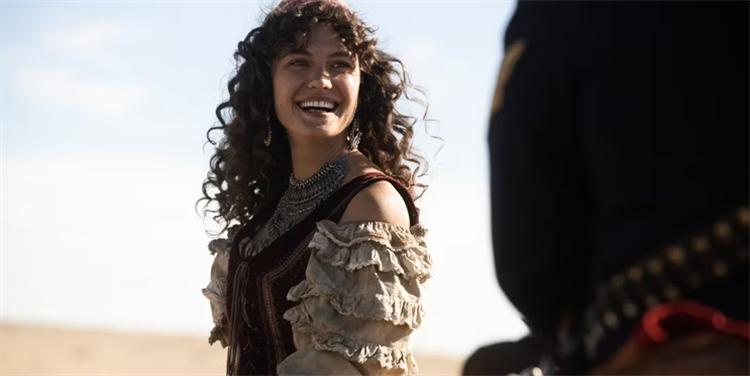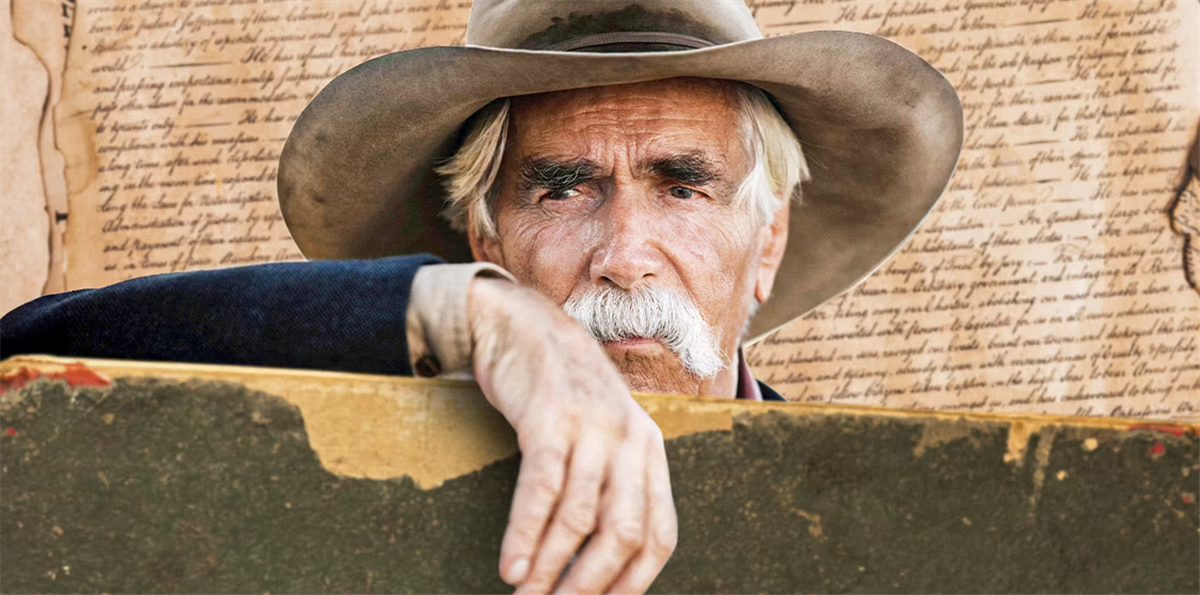It’s obvious if you think about it, but can you guess what it is?
- Despite pearly white teeth being historically inaccurate in the Old West, the overall story and accuracy of the socioeconomic conditions matter most in 1883.
- 1883 goes to great lengths to ensure historical accuracy, with every set, prop, and costume built from scratch and attention to detail in set design.
- While some fans have criticized the characters’ teeth as a historical inaccuracy, the importance lies in the immersive effect and compelling story, not minor details.
1883 is a film praised for its historical accuracy, but those pearly white teeth are a bit out of place; however, it does not affect the story, which matters most. Show creator Taylor Sheridan even hired a team of historians to assist in creating a historically accurate depiction of the period. The film does this spectacularly well, accurately portraying the socioeconomic conditions of the time with meticulous attention to detail in set design. According to Executive Producer David Glasser, every set, prop, and costume was built from the ground up to ensure careful attention to detail, something Sheridan prides himself on. This attention to detail is a typical feature of his work and it was evident in the neo-western crime film Wind River. It is safe to say that Sheridan endeavors to be as precise as possible, and that is an excellent quality in a filmmaker.
While less egregious than some filming errors, such as the Jeans Guy from The Mandalorian or the infamous Starbucks Cup from Game of Thrones, this break in historical continuity has led some fans to drag the show on the internet, waiving their fingers in derision. The setting, the motivations of the characters, and the zeitgeist of the time matter the most because, for Sheridan, honoring the stories of the people who lived during that time is essential. Audiences ought not to let perfect become the enemy of good. 1883 is not historically perfect, but it is a faithful enough representation of the time, and that’s what counts.
For Taylor Sheridan and David Glasser, Historical Accuracy in ‘1883’ Was Paramount

In the inaugural series Yellowstone, Sheridan brought to life the saga of the Dutton Family by creating his fictional series from the accounts of real-life people. This formulation of reality-inspired drama was a success and lead to the expansion of his universe with many prequels and sequels, most notably the first Yellowstone spin-off, 1883. The spin-off chronicles the pre-civil war journey of the Dutton Family through the West to their eventual homesteading in Yellowstone. More specifically, the series endeavors to tell the true story of the American West, a tale Sheridan believed to be told incorrectly. In an interview with The New York Times, Sheridan laments the current state of Western stories. He says, “The pioneers have never been portrayed accurately. Many pioneers came from Central Europe, Eastern Europe, and Asia, and they hired guides to take them West. They didn’t speak the language. They’d never seen a horse. They’d never held a gun. And they had no idea this land belonged to another group of people.” This is beautifully displayed in an early scene in 1883 when Shea Brennan (Sam Elliott) prepares a group of wide-eyed immigrant settlers for their migration across the country. He needs help explaining the deadliness of a rattlesnake bite and the itchiness of poison ivy, necessitating a translator with varying degrees of success and understanding. The series undoubtedly strives for a historically accurate depiction of the Old West concerning how the characters’ stories are told.
Further still, Executive Producer David Glasser ensured audiences in an interview with Deadline that Sheridan did not want to use CGI to create the sets and props and instead opted for realism and that, “Every piece of wardrobe, guns, even saddles weren’t what they are today. Everything had to be built, top to bottom,” with a team of historical advisors on hands to ensure that everything produced was appropriate to the period. The meticulous detail necessary to create such an immersive world would require a massive budget, so huge that Glasser was reluctant to disclose it to online publications. So, with so many resources invested in the historical accuracy of 1883, how is it that every character in the series has a beautiful set of pearly whites, and how is it that the offending vanity bones could cause such a stir among fans?
What’s Up With Those Teeth in ‘1883’?

Fans have noticed that despite Taylor Sheridan’s meticulous attention to historical detail, the characters have great teeth, an entirely inaccurate feature of the Old West. The first dental college was opened in Bainbridge, Ohio, on February 21, 1828, with subsequent educational institutions hovering around the urban centers. It was unlikely that the profession would find its way to the frontiers due to the instability and scarcity of resources in those places. The Old West didn’t have great dentists. Trained dentists in the frontier only had a little to work with. Extraction was the only method available to them concerning rotten teeth or any dental problem. They used pliers to remove the offending tooth; almost no anesthetics were available. The lucky few may have had ether, but more often than not, they used whiskey to numb the pain. It was a brutal practice that left many gaps in smiles and sore heads, one people would probably try to avoid. Toothbrushes with bristles were a long way away, not hitting the markets until 1938, so it was very much a fact of life that people had bad teeth. Fans might kick around theories about how the show could miss this detail and poke fun at the production, but a better question is, does it matter? For Taylor Sheridan, that answer is a resounding no.
For Taylor Sheridan, Story Is What Matters In ‘1883’

Are the teeth such a critical point of contention that the audience is smacked out of the show and back into reality? That’s debatable. Contrast this detail with a series like Deadwood where the characters have terrible teeth. When people think of the series, they are unlikely to remember when a character flashed a big smile and proudly displayed their rotting chompers. No, instead, audiences remember Al Swearengen (Ian McShane) waxing poetic with a severed head. It is the relationships, the intrigue, and the violence of the show they remember. It is the drama that is memorable and compelling. Audiences are immersed in the story, and every other detail, setting, costuming, etc., is to serve the story. The same is true for 1883.
Taylor Sheridan did not set out to make a documentary with dramatic re-enactments. He sets out to tell a story rooted in the American West’s truth and accomplishes this. He does this by introducing characters with diverse ethnic and geographic backgrounds. He shows the brutality of disease and the seriousness with which it is treated when Shea Brennan sends a family infected with smallpox out to die in the wilderness. The drama between the characters is center stage in a scene like this, firmly rooted in the realities of the time. It shouldn’t matter in the scene how historically accurate a character’s teeth are. The story matters most; Sam Elliott’s delivery of the news and the characters’ responses to it are what is significant and memorable about the scene. It is their humanity on display that captures the attention. The immersive effect created between the performances and the setting is enough to be faithful to the spirit of the times, which is why those pearly whites do not matter all that much.

Taylor Sheridan has created a spectacular universe in both Yellowstone and 1883 and the subsequent spin-offs rich in truth and drama. This combination has made the series a hit, resonating with audiences all over the U.S. and beyond. It’s a ringing endorsement of Sheridan’s powerful storytelling and ability to deliver beautifully crafted stories about the natural world experiences of those who braved the American West. It is, in truth, a multi-layered tale of the struggle of Indigenous people against a tide of European immigration and an immigrant tale about the fear of moving to a new world. Sheridan has given audiences a beautifully detailed and rich world to dive into and explore. So, I think we can forgive the immaculately clean teeth, even if it is entertaining to poke fun at it.
